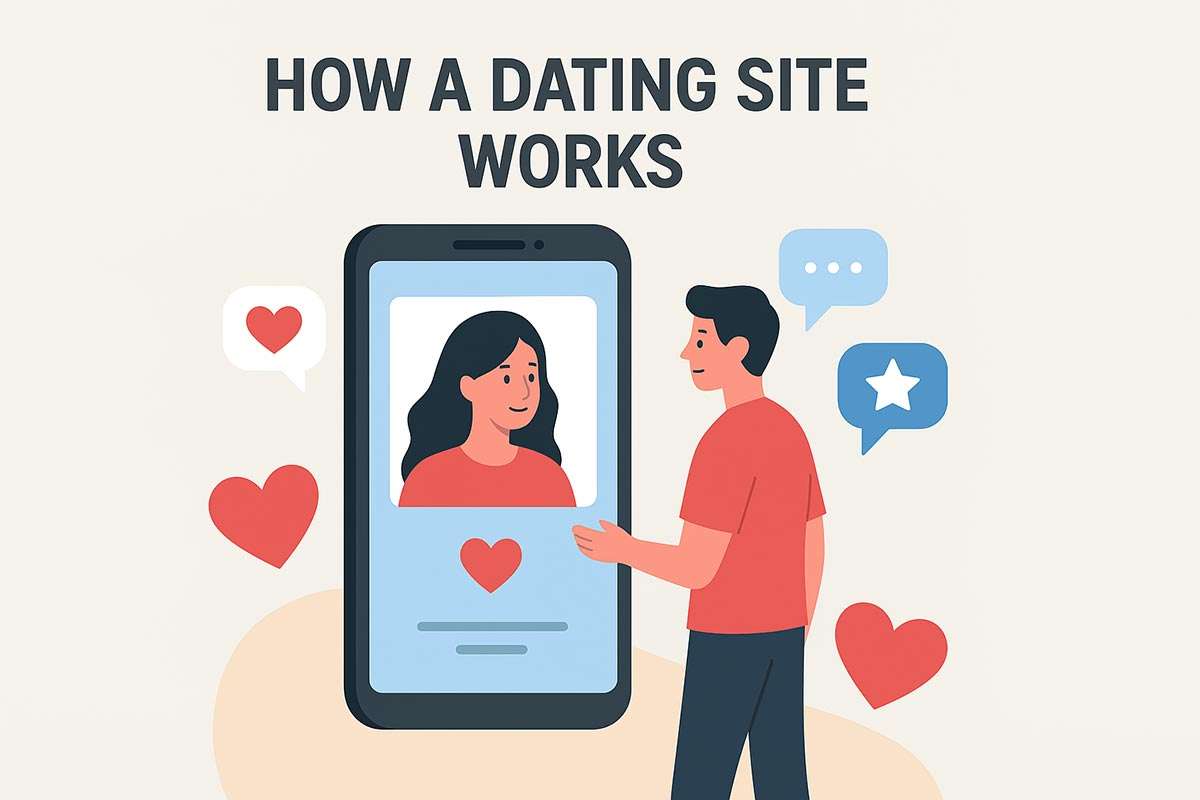Online dating has transformed how people meet and form relationships. Instead of depending only on chance encounters at work, social events, or through friends, millions of people now rely on dating platforms to connect with others. But how does a dating site actually work behind the scenes? And what are the best ways to make the most of your online dating experience? This guide will walk you through the typical structure of a dating site, explain its key features, and provide practical tips to increase your success.
1. Registration and Profile Creation
The first step on almost every dating site is registration. Most platforms allow you to sign up using your email address, a phone number, or a social login such as Google or Facebook. After creating an account, you’ll typically be asked to fill out a profile.
A dating profile usually includes:
- Basic details: name, age, gender, and location.
- Profile photo: often the most important element. A clear, authentic photo is crucial for attracting attention.
- Bio/description: a short paragraph about yourself, your interests, and what you’re looking for.
- Preferences: the type of partner you’d like to meet, such as age range, location, or relationship goals.
🔑 Tip: Be honest and specific in your profile. Exaggerating or hiding important facts may backfire later. Use photos that represent who you are now, not who you were five years ago.
2. Matching Systems
Once your profile is set up, the site’s algorithms start working. Most dating sites rely on one of two matching systems:
- Search and browse: You can look through profiles by applying filters (age, distance, interests) and choose whom to contact. This approach gives users more control.
- Algorithmic matching: Some platforms, especially serious relationship sites, use personality tests and compatibility algorithms to recommend matches.
Regardless of the method, the system aims to connect people who share compatible traits or mutual attraction.
🔑 Tip: Keep your search filters flexible. Being too strict (e.g., limiting distance to only a few miles or setting a very narrow age range) can drastically reduce your opportunities.
3. Communication Tools
Once a match is found, communication is key. Dating platforms usually offer multiple ways to interact:
- Messaging systems: the most common way, similar to email or instant messaging.
- Likes, winks, or hearts: quick signals of interest without writing a message.
- Voice or video calls: increasingly popular, especially after the rise of remote communication.
- Commenting on profiles/photos: on some sites, you can engage by leaving comments.
🔑 Tip: Personalize your first message. A simple “Hey” or “What’s up?” often gets ignored. Mention something from the other person’s profile to show genuine interest.
4. Safety and Privacy
Reputable dating sites take safety seriously, but users also play a role in protecting themselves. Most platforms provide tools such as:
- Blocking and reporting: to deal with harassment or suspicious behavior.
- Profile verification: requiring users to verify their identity through phone or photo checks.
- Private chat: preventing the sharing of personal details until both parties are comfortable.
🔑 Tip: Never share sensitive information (address, workplace, financial details) early on. Meet in a public place for the first date, and tell a friend where you’re going.
5. Paid vs. Free Features
Many dating platforms follow the “freemium” model. This means you can use the site for free with limited features, while premium plans unlock more functionality. Common paid features include:
- Seeing who viewed your profile.
- Unlimited messaging.
- Higher visibility in search results.
- Access to advanced filters.
- Verified badges or “boosts” to get more exposure.
🔑 Tip: Start with the free version to understand the platform. If you feel it’s a good fit and want more serious results, consider upgrading to premium.
6. The Role of Algorithms and Data
Behind the scenes, dating sites rely heavily on data. The platform tracks your preferences, swipes, and interactions to refine the matches you receive. The more you use the site, the more accurate the suggestions become.
Some apps also use machine learning to identify patterns. For example, if you often like profiles of people with certain hobbies, the system will show you more of them.
🔑 Tip: Interact actively. The algorithm learns from your behavior. If you never send messages, the system may not know what you’re really looking for.
7. Challenges and Common Mistakes
While dating sites are powerful tools, they also come with challenges:
- Profile fatigue: browsing too many profiles can feel overwhelming.
- Ghosting: people may suddenly stop responding without explanation.
- Misrepresentation: some users post outdated photos or inaccurate details.
- Overdependence: relying solely on apps instead of balancing online and offline interactions.
🔑 Tip: Set realistic expectations. Not every match will lead to a date or a relationship. Think of online dating as a way to expand your options, not as a guarantee.
8. Tips for Success
Here are some practical strategies to make the most of your online dating journey:
- Use quality photos – at least one clear headshot and one full-body picture. Natural lighting works best.
- Be proactive – don’t just wait for messages; reach out to people who interest you.
- Stay positive – write a profile that highlights what you enjoy rather than listing what you dislike.
- Balance online and offline life – spend time meeting matches in person rather than chatting endlessly.
- Stay patient – finding the right connection can take time. Consistency is key.
9. The Future of Dating Sites
Dating platforms continue to evolve. Features such as video dating, AI matchmaking, and niche communities (sites focused on religion, lifestyle, or specific interests) are growing rapidly. Mobile apps have made online dating even more accessible, and with advancements in virtual reality, we may soon see immersive online dating experiences.
Conclusion
A typical dating site follows a clear process: registration, profile creation, matching, communication, and meeting in person. By understanding how these systems work and following best practices, you can make the most of your online dating journey.
Remember: be authentic, stay safe, and keep an open mind. Online dating is a tool—success depends largely on how you use it. With patience and effort, it can lead to meaningful connections, friendships, and even lifelong partnerships.


